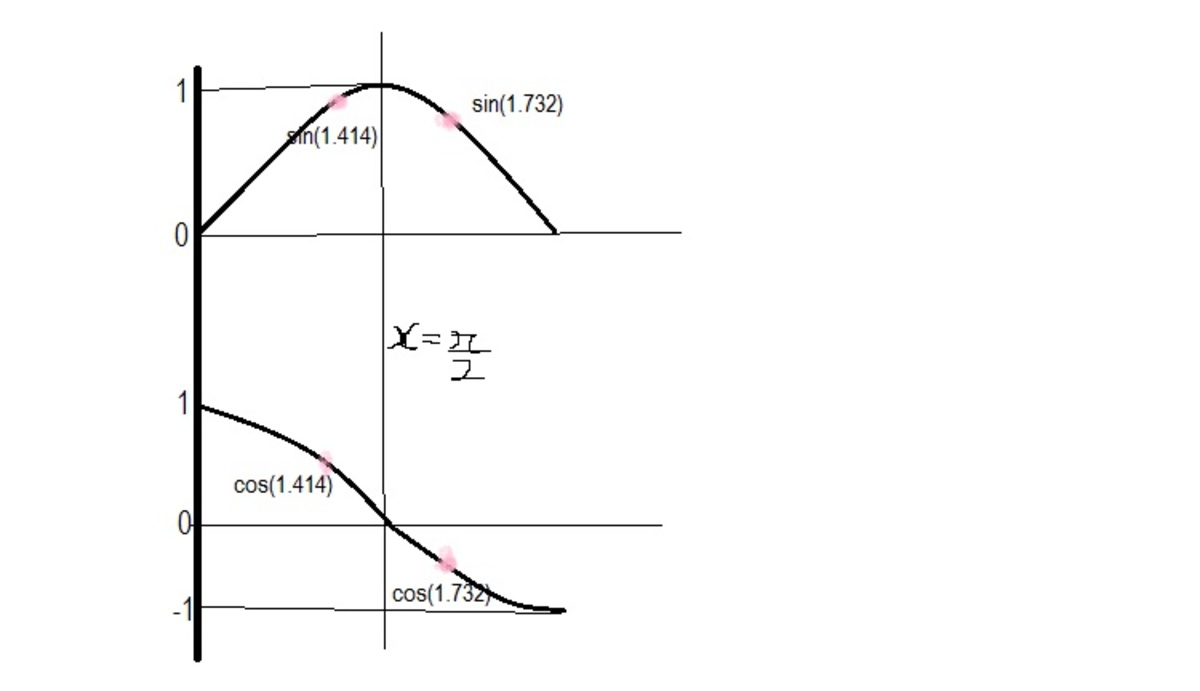Pure geometry topics application for JEE
Geometry
Level
4
The curve represented by the equation above is?
a hyperbola with focii on
-axis
an ellipse with focii on
-axis
a hyperbola with focii on
-axis
an ellipse with focii on
-axis
None of this choices
This section requires Javascript.
You are seeing this because something didn't load right. We suggest you, (a) try
refreshing the page, (b) enabling javascript if it is disabled on your browser and,
finally, (c)
loading the
non-javascript version of this page
. We're sorry about the hassle.
surely not a level 5 problem, can be solved mentally with in 15 sec.
the graph of s i n x between [ 0 , π ] is symmetrical about x = 2 π
and 2 π = 1 . 5 0 7
also 2 = 1 . 4 1 4 and 3 = 1 . 7 3 2
we see that 1.414 is closer to 1.507 than 1.732, so s i n ( 2 ) > s i n ( 3
similarly from graph c o s ( 3 ) = n e g a t i v e v a l u e
the denominator of y 2 is greater as the are added up ,so the answer follows an ellipse with focii on y axis
do upvote